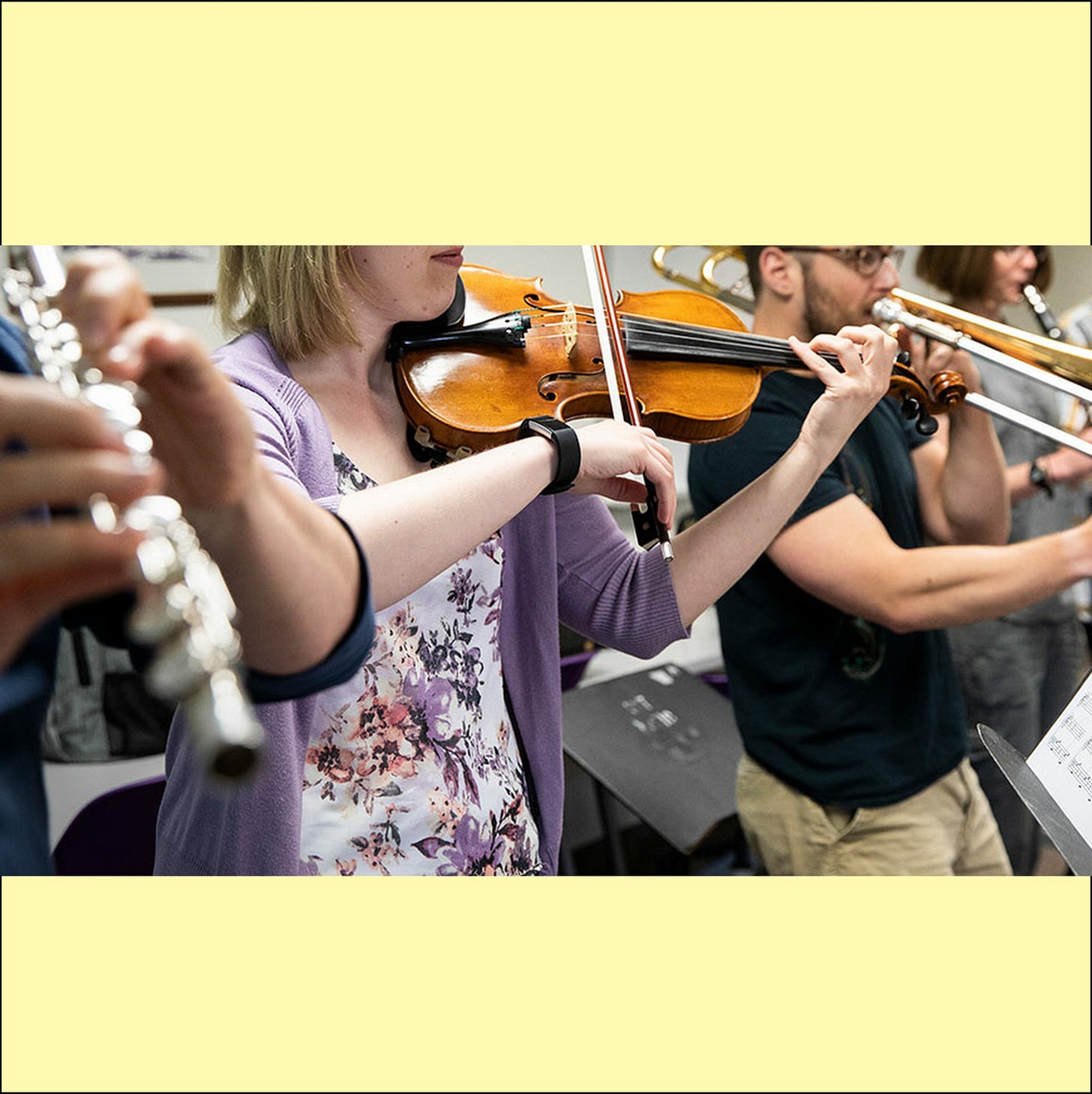This publication includes not only general essays about music and specific tips for learning fiddle/violin, but also fresh ideas to help music teachers — not only ways to present concepts to violin/fiddle students but also thoughts about the connection of music to other subjects, how it relates to dyslexia, and ideas about teaching, such as Whose Side Am I On?
Good teachers work hard to help people take their next step on the path of learning music. For me, this has involved working with all sorts of people from many walks of life, ages, backgrounds, and motivations, resulting in my own style of interactive pedagogy. Some of these articles are new; others are taken from my many blog posts for what used to be called Music Teacher’s Helper.
My instrument is the fiddle, though I started out on piano at age 5 after watching and hearing my older brother and sister learning and playing piano for years. I insisted on being able to do it too, so I was given my chance to take piano lessons. When, four years later, my school offered me a chance to learn another instrument, I chose violin so I could have a case with those cool little pockets in it where you put stuff like rosin and a cloth and a tuning fork and maybe new strings or some other unexplained doodads that I always wondered about when my brother was practicing and I was busy examining the mysteries of his open case.
I learned classical music for many years, right through college with the Yale Symphony and later with the community orchestra called the Boston Philharmonic. But the incredible range of fiddle music enveloped me with its quality, range, and community engagement. I especially liked the variety within the Scottish fiddle traditions, such that I’ve become known for that since the 1970s, from dance hall to concert hall. Though I have played a lot of classical and Scottish (and the closely related Cape Breton) music, I also have worked with very knowledgeable musicians in other styles, including Irish, Hungarian, klezmer, French Canadian, oldtime, bluegrass, and jazz — enough to know what it takes to delve into a culture and its style of music, and to have an idea of what I didn’t know.
I hope you’ll find that my observations on teaching music are broader than one instrument, and are thought-provoking for all sorts of teachers of music. Though it’s a treat to teach advanced players, most of my students have been beginners and intermediate players. People have asked if I get tired of teaching beginners, citing the sterotype of the squeaky, out-of-tune fiddler. If I had to listen to recordings of beginners all the time, then yes, I’d probably get tired of it; but in fact, I work with people, and every person is different and has immediate needs to address.
Learners have a chance, through music, to develop and learn something about themselves that no one else can take away from them. This is especially precious for kids. For adults, it’s no less true, if more complex.
Enjoy these articles; I look forward to any comments you may have!




